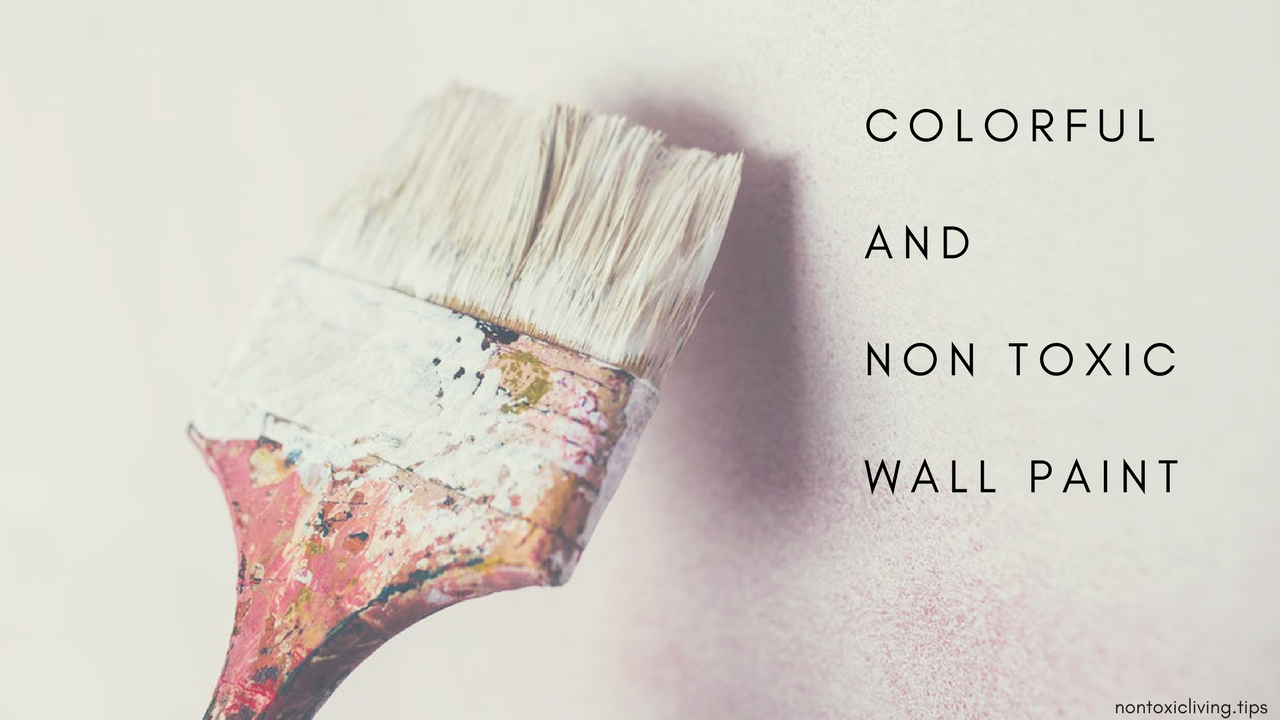
Colorful and Nontoxic Wall Paint
Jan 05, 2018by Angela Cummings and Sophia Ruan Gushée
Painting walls brings out inner-creativity, even in the most non-creative people. With paint chips taped to the wall, we act as interior designers and choose the color that will look best with our flooring, furniture, and art work. In addition to color, it’s important to choose a nontoxic paint versus a conventional one. Why?
Conventional paints often have higher amounts of Volatile Organic Compounds (VOCs) and other chemicals. And, while most of us assume that some arm of the U.S. government has and enforces rules about the amount of VOCs that can be in paint (and other products), they do, but not for indoors.
According to the Environmental Protection Agency (EPA), “No federally enforceable standards have been set for VOCs in non-industrial settings.”(1) The VOC standards that the EPA has developed were for outdoor use, not indoor. Having said that, the level of VOCs in paint is still a useful measurement for determining which wall paints are less toxic than others.
But it’s not the only measurement.
What is the difference between ordinary paint and nontoxic wall paint?
Ordinary Wall Paint
Ordinary indoor wall paint (or conventional wall paint) can be an oil-based paint or a water-based. Oil-based paints are made from petroleum-oil-byproducts and can contain up to 100 different VOCs.(2) Water-based paint, on the other hand, is made from water, and typically contains fewer VOCs than oil-based paints.(3) However, they can still contain higher levels of VOCs and other harmful chemicals than low-VOC, zero-VOC, or natural paints.
Wall paint typically has color, which is created by adding dyes and pigments. Dyes and pigments often contain VOCs as well. Generally speaking, the darker the color, the more VOCs are present.
The VOC amount is required by law to be listed on the paint can. That amount indicates the amount of VOCs for the base color only. It does not take into account the VOCs in the dye or pigment that is added to paints.
While there is not a standard definition for nontoxic (therefore no standard measurement for nontoxic paint), experts such as the Environmental Working Group and U.S. Environmental Protection Agency, agree that the guidelines below will help identify healthier paint choices.
Nontoxic Wall Paint
Nontoxic wall paint could be equated with paint that has fewer chemicals. The fewer harmful chemicals, the better. Less is more. You get the idea.
Natural paints are the least toxic and made from animal products, such as milk. Milk-based paints come in powder form and you have to add water to them. They do not contain VOCs or other chemicals that may be harmful to health.(4)
These paints go on the wall differently than ordinary paint. It may take a little getting used to. Paint a small mud room or laundry room first to get the hang of painting with a natural paint before you tackle the larger, highly-used rooms, like the living room. Please note that milk-based paints may not be suitable for high moisture areas like the kitchen or bathroom.(5)
Paints that are not milk-based can still be healthier choices.
- Look for paints that are zero-VOC or low-VOC and contain fewer chemicals overall. Just a heads up though, there is no standard definition of low-VOC; it is up to individual manufacturers to determine what is considered and labeled low-VOC.(6) Generally, zero-VOC paints are less toxic.
- Paints that meet the Green Seal standards receive Green Seal-11 (GS-11) certification, and are generally accepted as nontoxic. The GS-11 certifies that the number of VOCs and other harmful chemicals are in limited amounts.(7) Just because a product isn’t Green Seal-11 certified doesn’t mean it’s harmful though. Check with manufacturers to find out which chemicals are in their paint. If they are unwilling to tell you, find a paint manufacturer that discloses ingredients.
- Nontoxic paints have pigments or dyes that can contain VOCs. Since the VOC amount listed on the paint can does not include the VOCs found in coloring, be sure to look for natural dyes and pigments made from plants or minerals, or zero- or low-VOC dyes and pigments.
VOC levels and harmful chemicals in paints are a concern for both human and environmental health. A good place to check for nontoxic and less toxic wall paint is building supply stores that emphasize either “green”, “eco,” or “healthy” in their business philosophy. You can typically find this information in the “about us” tab of their websites. Who knows, they might even help you choose the color!

For more information about nontoxic wall paint, enroll in the D-Tox Academy.
The D-Tox Academy gives subscribers access to specific brands of products, and tips for how to use and maintain products. The academy includes short videos and check lists that are helpful when making healthier changes.
References
(1) US EPA
(2) A to Z of D-Toxing Works Cited Parts 3 and 4
(3) US EPA
(4) (5) (7) EWG
(6) US EPA
🎁 unlock your ULTIMATE HOME DETOX™ starter pack
Download the Ultimate Home Detox™ Starter Pack—your free set of practical, science-backed tools to begin reducing toxic exposures in your everyday life.
- Nontoxic Cleaning Guide
- Forever Chemicals Detox Starter
- EMF Detox Challenge
- Safe Cookware Starter Kit
- Kitchen Detox Checklist
- Fertility / Pregnancy / Children's Detox
Join 349,000+ people who’ve turned to Ruan Living for trusted, practical nontoxic guidance. These resources have helped thousands begin their journey toward a healthier home—and they’re yours, free.
GET YOUR ULTIMATE HOME DETOX™ STARTER PACK NOWWe hate SPAM. We will never sell your information, for any reason.


